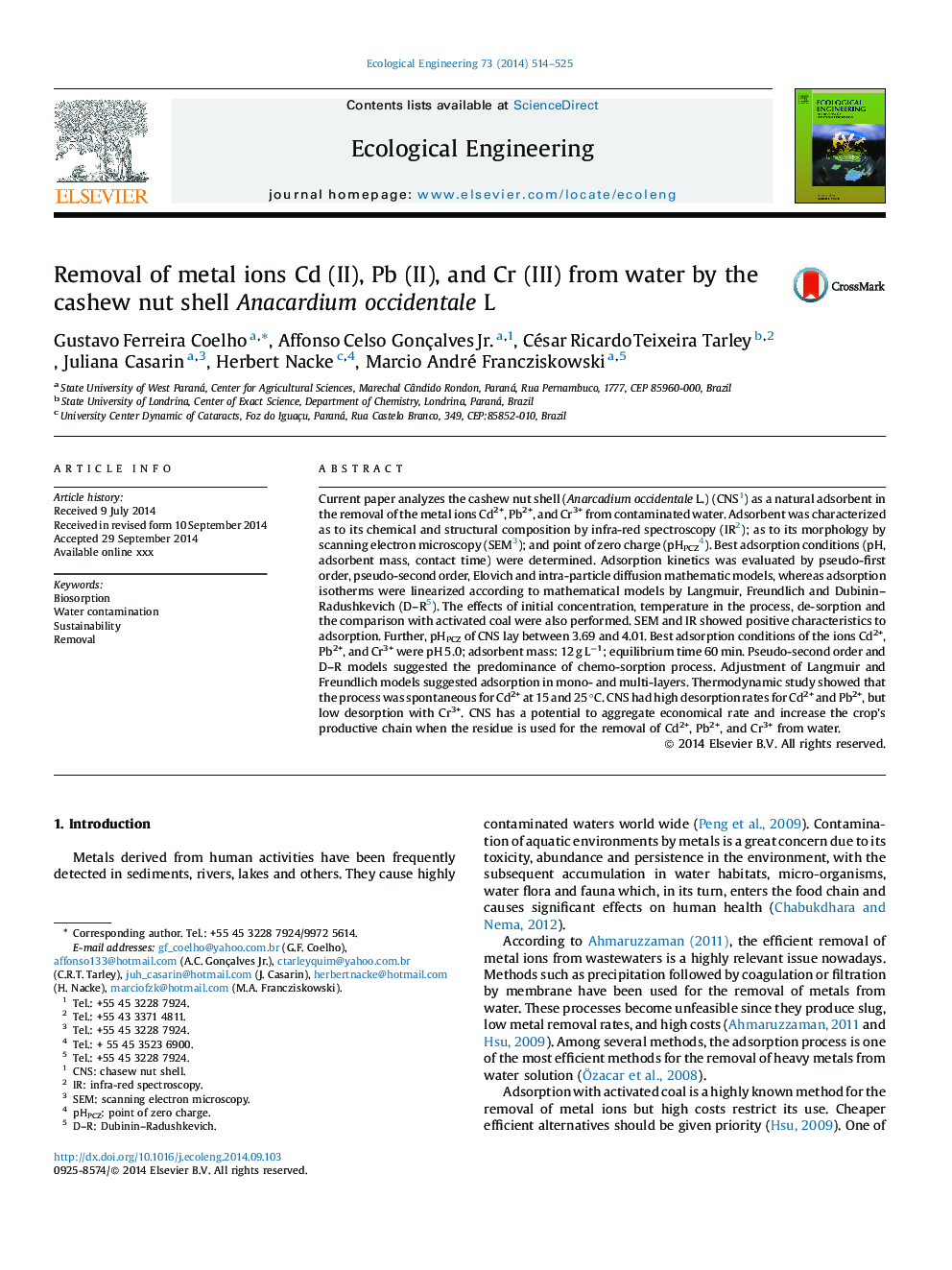| Article ID | Journal | Published Year | Pages | File Type |
|---|---|---|---|---|
| 6301997 | Ecological Engineering | 2014 | 12 Pages |
Abstract
Current paper analyzes the cashew nut shell (Anarcadium occidentale L.) (CNS1) as a natural adsorbent in the removal of the metal ions Cd2+, Pb2+, and Cr3+ from contaminated water. Adsorbent was characterized as to its chemical and structural composition by infra-red spectroscopy (IR2); as to its morphology by scanning electron microscopy (SEM3); and point of zero charge (pHPCZ4). Best adsorption conditions (pH, adsorbent mass, contact time) were determined. Adsorption kinetics was evaluated by pseudo-first order, pseudo-second order, Elovich and intra-particle diffusion mathematic models, whereas adsorption isotherms were linearized according to mathematical models by Langmuir, Freundlich and Dubinin-Radushkevich (D-R5). The effects of initial concentration, temperature in the process, de-sorption and the comparison with activated coal were also performed. SEM and IR showed positive characteristics to adsorption. Further, pHPCZ of CNS lay between 3.69 and 4.01. Best adsorption conditions of the ions Cd2+, Pb2+, and Cr3+ were pH 5.0; adsorbent mass: 12 g Lâ1; equilibrium time 60 min. Pseudo-second order and D-R models suggested the predominance of chemo-sorption process. Adjustment of Langmuir and Freundlich models suggested adsorption in mono- and multi-layers. Thermodynamic study showed that the process was spontaneous for Cd2+ at 15 and 25 °C. CNS had high desorption rates for Cd2+ and Pb2+, but low desorption with Cr3+. CNS has a potential to aggregate economical rate and increase the crop's productive chain when the residue is used for the removal of Cd2+, Pb2+, and Cr3+ from water.
Related Topics
Life Sciences
Agricultural and Biological Sciences
Ecology, Evolution, Behavior and Systematics
Authors
Gustavo Ferreira Coelho, Affonso Celso Gonçalves Jr., César Ricardo Teixeira Tarley, Juliana Casarin, Herbert Nacke, Marcio André Francziskowski,
